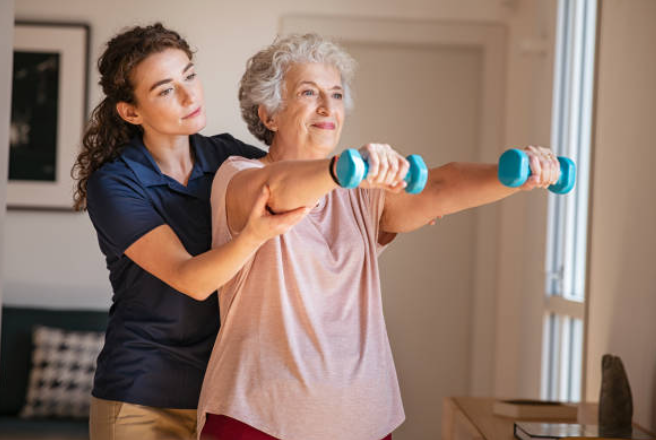Osteoporosis is a chronic condition where the quality of the bone tissue becomes thin and fragile which can put you at a higher risk of fractures. People with osteoporosis have a higher risk of breaking their bone from a fall compared to the normal population. It is estimated that 4.74 million Australians (66%) older than 50 years old had poor bone health. Osteoporosis can affect the whole body or be localised in a specific area of the body.
What causes Osteoporosis:
Osteoporosis is often known as the ‘silent’ disease because people do not experience many symptoms. People find out they are osteoporotic when they experience a fracture. The diagnosis of osteoporosis is achieved through a bone mineral density scan which is a similar process to an x-ray. There are numerous risk factors that can affect bone density. This includes:
- Ageing
- Genetics
- Post-menopause (Oestrogen deficiency)
- Specific medications (prolonged corticosteroid use)
- Lack of calcium (Bone growth)
- Lack of sunlight (Vitamin D for calcium absorption)
- Lack of exercise
How can physiotherapy help with Osteoporosis?
Exercise is an important part of the treatment of osteoporosis. Studies highlight that exercises that are weight bearing and provide resistance are the most effective for osteoporosis. The aim of physiotherapy is to slow down the deterioration of bone mass over time with specific strengthening exercises. These exercises can help build strong muscles which can assist in your everyday activities. Muscles pull on the bone and help with movement. For this reason, strong muscles can make strong bones. Research have shown that physiotherapy can decrease pain, improve function and quality of life for someone with osteoporosis. The Royal Australian College of General practitioners recommend at least 2x a week of weight bearing exercise to help build strong bones.
The prevention of fractures is an essential aspect of managing osteoporosis. Fractures can increase sedentary behaviour and lead to other medical conditions. It is important for osteoporotic people to take the necessary steps to reduce the risk of falls in both the home and the community environment. A physiotherapist can also incorporate fall prevention exercises to help you stay on your feet so you do not risk falling over and getting a fracture.
A Myphysio physiotherapist can provide you with a thorough assessment to determine areas of weaknesses and provide you with an osteoporosis specific exercise program to help to live your life with confidence. Book an appointment today! You can also follow us on our Instagram page where you can get the latest physiotherapy tips.
References:
Yuan, Y., Chen, X., Zhang, L., Wu, J., Guo, J., Zou, D., Chen, B., Sun, Z., Shen, C. and Zou, J., 2016. The roles of exercise in bone remodeling and in prevention and treatment of osteoporosis. Progress in Biophysics and Molecular Biology, 122(2), pp.122-130.
RACGP. Osteoporosis prevention, diagnosis and management in postmenopausal women and men over 50 years of age. https://www.racgp.org.au/clinical-resources/clinical-guidelines/key-racgp-guidelines/view-all-racgp-guidelines/osteoporosis

